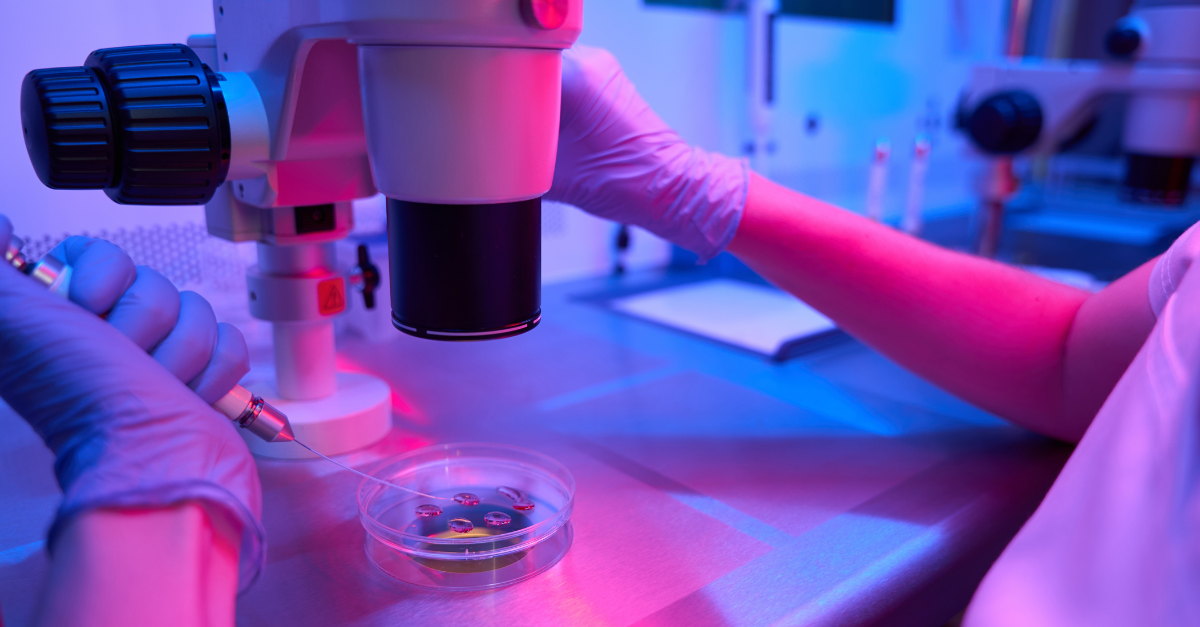Biomaterials are revolutionising healthcare
life sciences

life sciences
Biomaterials play a pivotal role in the dynamic field of biomedicine, where the marriage of natural, biological substances and advanced technology has revolutionised the medical treatments and devices that can be offered to patients. These materials, whether biological or synthetic, are carefully selected for their ability to integrate seamlessly with body tissues, fostering improved bodily functions.
Biomaterials are biological or synthetic substances which can be implanted into body tissue to improve bodily functions. Any material can technically be a biomaterial but must be compatible with the body tissue it interacts with.
This biocompatibility is what ultimately makes a material a biomaterial. According to Pennsylvania State University, a biomaterial is: “A material derived from, or produced by, biological organisms like plants, animals, bacteria, fungi and other life forms.”
Materials can interact with your body in four main ways:
Because biomaterials need to bond with your body tissue over long periods of time, it’s crucial that these bonds are healthy and sustainable. Some common biomaterials we see today are made from titanium and stainless steel, which can form stable bonds and which are used to make joint replacements, bone plates and dental devices for example.
Bioactive materials are a subset of biomaterials with specific properties that actively interact with biological tissues or cells. These materials can stimulate specific biological responses when in contact with living organisms.
Bioactive materials can encourage tissue growth, enhance healing or provide other beneficial interactions with the body. They are commonly used in applications like bone grafts, dental materials and tissue engineering.

Biomedicine is the application of biological and physiological science to clinical medicine and considers how the body interacts with the environment. Biomedicine and biomaterials are closely related, working together for the development of medical devices, implants and other technology used to diagnose and treat illnesses and develop regenerative medicine.
Biomaterials are an important component in biomedicine, providing materials compatible with biological systems. These materials can be engineered to mimic the properties of natural tissues or organs, allowing them to effectively integrate with the body. For example, biomaterials are used to make artificial joints, dental implants and tissue scaffolds for regenerative medicine.

The biomaterial landscape is dynamic, with many different materials used for different medical purposes. Take titanium, for example – it’s a common go-to for its strength and compatibility with body tissue. However, as scientists continue to innovate in the field, more and more advanced biomaterials have become available such as hydrogels and piezoelectric biomaterials.
Hydrogels, an advanced biomaterial, are materials made from ‘hydrophilic structures’, which are cross-linked polymers which can hold large volumes of water. A good, everyday example of a hydrogel is jelly. Like jelly, hydrogels are mostly water, with thread-like molecules called polymers preventing water from leaking, maintaining the shape of the hydrogel.
There are many potential uses for hydrogel biomaterials, including wound-healing bioadhesives, artificial skin and cartilage development, sexual organ reconstruction and vocal cord replacement. Some common examples of hydrogels in use include contact lenses and in wound dressings.
Chemical hydrogels are used to create medical devices that require constant contact with the body or need to be contained inside the body for extended periods of time. Chemical hydrogels are used in lab-grown tissues and are used to shape and mold tissue into the required shapes and forms. For example, skin can be grown in a lab to replace the skin lost by a burn victim. Chemical hydrogels can also help to moisten the eyes when contact lenses are used and moisture cannot naturally reach the cornea.

Piezoelectricity is a process where electricity is generated through the movements of the body, such as stretching, breathing and small motor movements. Special types of biomaterials can be created through this piezoelectric process, and these biomaterials can be used to make tiny medical devices which can monitor damaged arteries, make bones regenerate quicker, heal wounds and treat cancer, among other possible uses.
These biomaterials can be created through different processes, including:

Biomaterials have a promising and exciting future. The field is constantly evolving, with designers challenging themselves to create new materials that are bio-based and sustainable. In the future, biomaterial medical devices will be designed to be dynamic and are able to react to changes in the environment - such as temperature, pH and light. These materials have the potential to be used in a wide range of applications, including drug delivery, tissue engineering and regenerative medicine.
Scientists from the University of New South Wales in Sydney recently developed a new type of biomaterial which can mimic human tissue and fight bacteria. Named Trpzip, the biomaterial supports natural cell behaviour, prevents bacterial infections and is self-healing. Trpzip can be easily injected and printed and has the potential to reduce the need for animal testing for biomaterials.
Trpzip also has future applications in food and manufacturing technology:
“We think that Trpzip hydrogels and materials like it will provide a more uniform and cost-effective alternative to animal-derived products. It would be a tremendous outcome if our material reduced the number of animals used in scientific research.” - A/Prof. Kilian
With scientists developing groundbreaking devices like Trpzip, the possibilities are endless for the Life Sciences sector. The increasing demand for sustainable and eco-friendly materials means biomaterials are poised to play a significant role in shaping the future of material science.
Brunel’s entrepreneurial spirit and background as a technical role specialist make it a natural partner for life science ventures. Speak with our experienced team today!